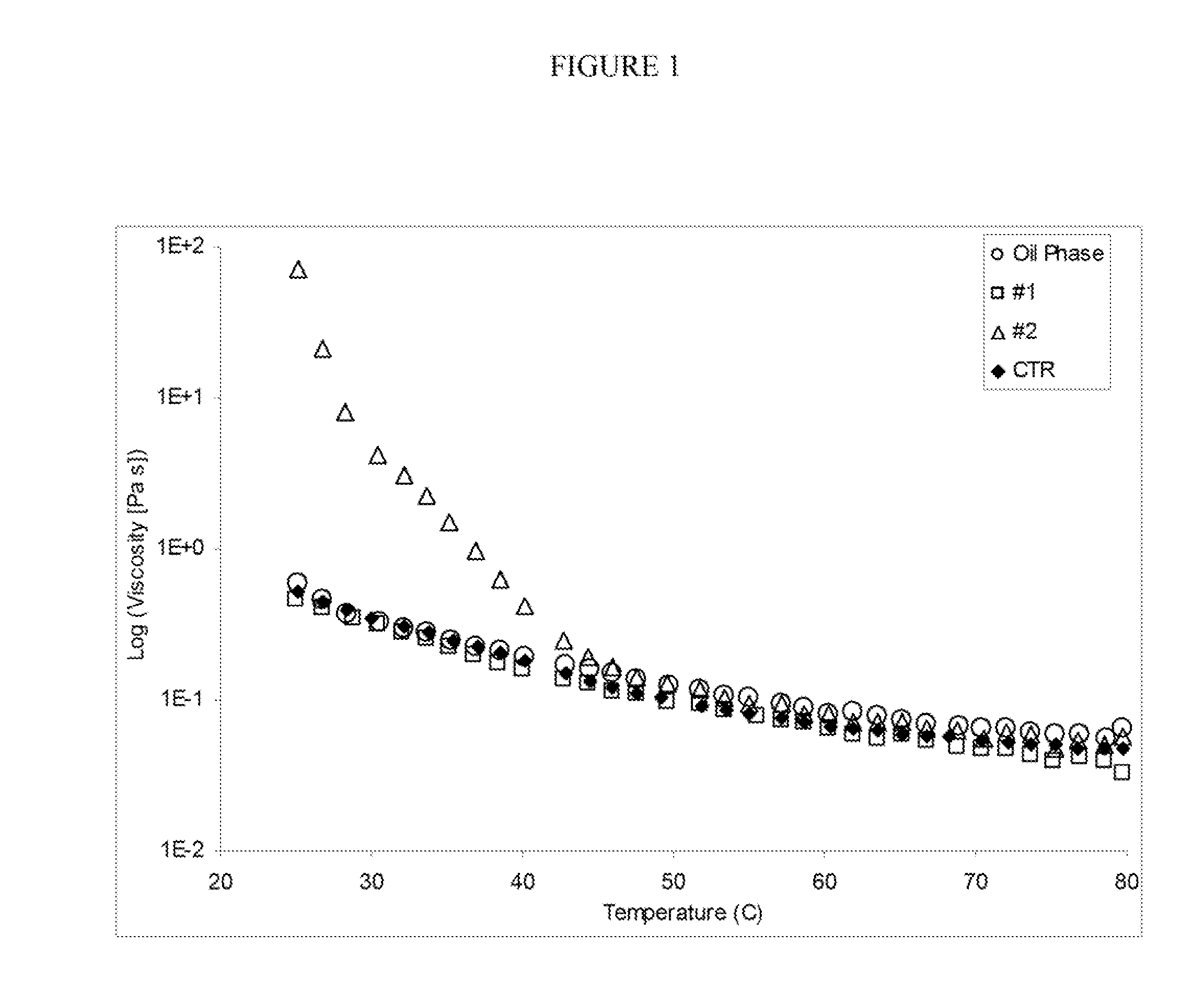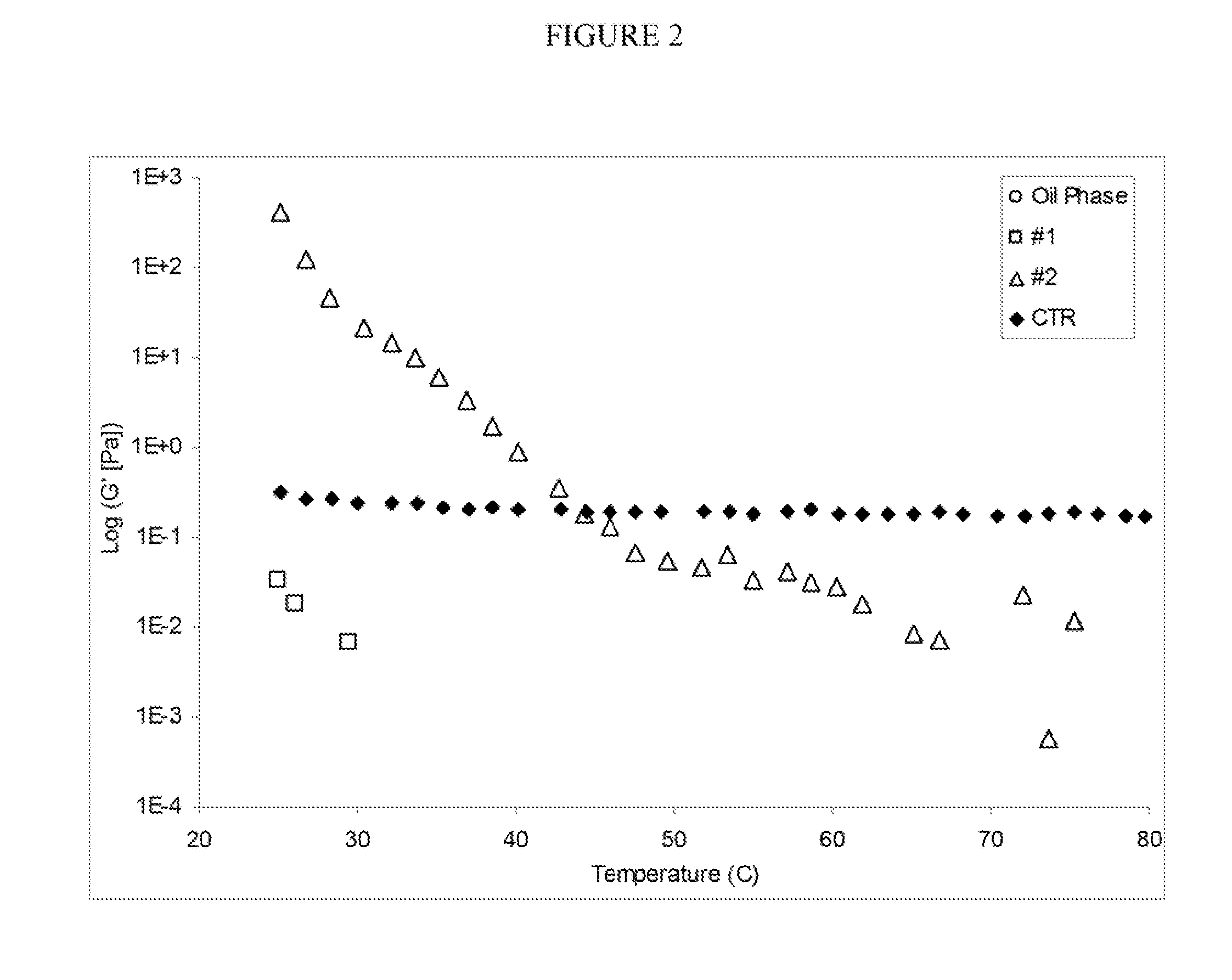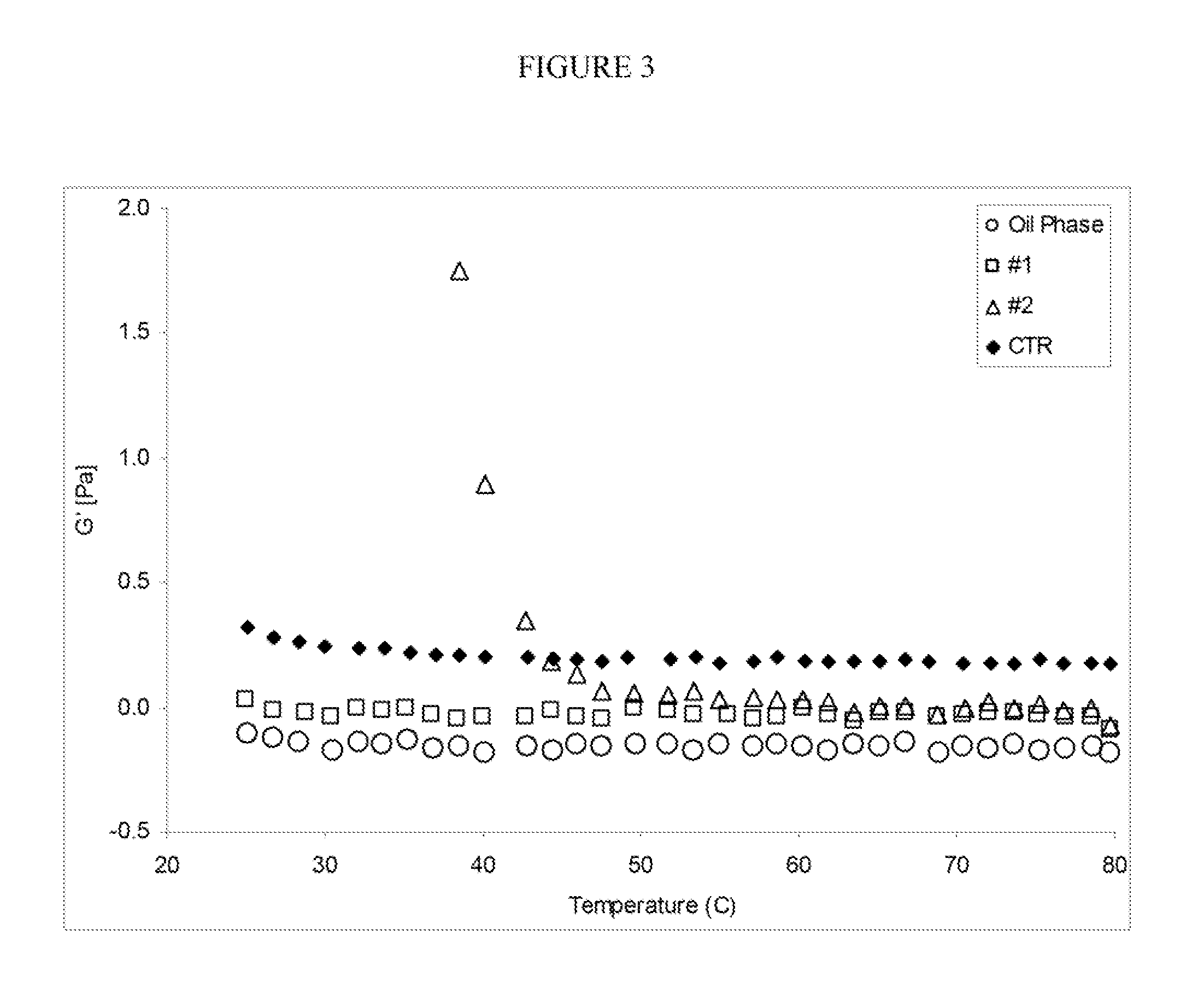Stabilized Glycerin-in-Oil Emulsions
a technology of glycerin and oil, applied in the direction of packaging foodstuffs, packaged goods types, drug compositions, etc., can solve the problems of unstable glycerin-in-oil emulsions, hard or durable lipstick alternatives that fail to incorporate glycerin or other hydrophilic moisturizers, and achieve the effect of extending the li
- Summary
- Abstract
- Description
- Claims
- Application Information
AI Technical Summary
Benefits of technology
Problems solved by technology
Method used
Image
Examples
example 1
[0045]Emulsion formulations A-D were prepared according to the following table. All amounts are given in weight percent of the components.
TABLE Iname / descriptionABCDC10-30 cholesterol / lanosterol esters27.029.028.027.5low odor lanolin30.030.030.030.0glycerin30.030.030.030.0trihydroxystearin1.01.0—1.0hydroxystearic acid0.50.50.5—polyglyceryl-6-polyricinoleate,2.0—2.02.0polyglyceryl-2-isostearate,disteardimonium hectorite, and traceantioxidantsunscreen agent9.09.09.09.0caprylyl glycol0.50.50.50.5total100.0100.0100.0100.0
[0046]Upon visual inspection for stability, formulation A showed no separation after overnight treatment in a 60° C. oven. Formulations B and C showed some separation, and D showed somewhat less separation compared to B and C under the same conditions. After one week at 60° C., formulation A continued to show no separation, formulation B exhibited no additional separation compared to the overnight result, and formulations C and D showed increased separation compared to ...
example 2
[0048]Emulsion formulation E was prepared according to the following table. All amounts are given in weight percent of the components.
TABLE IIname / descriptionEC10-30 cholesterol / lanosterol esters25.0lanolin30.0glycerin30.0trihydroxystearin0.5hydroxystearic acid1.0polyglyceryl-6-polyricinoleate,4.0polyglyceryl-2-isostearate,disteardimonium hectorite, and traceantioxidantpetrolatum9.0caprylyl glycol0.5total100.0
example 3
[0049]Emulsion formulation F was prepared according to the following table. All amounts are given in weight percent of the components.
TABLE IIIname / descriptionFskin conditioning agents7.40botanical extracts8.00lanolin30.00glycerin28.80trihydroxystearin2.00hydroxystearic acid1.00polyglyceryl-6-polyricinoleate, polyglyceryl-2-2.00isostearate, disteardimonium hectorite, and traceantioxidantpreservative0.50film former5.00antioxidants1.20pigments and cosmetic powder13.50flavorant0.60total100.00
[0050]Emulsion F was challenged with three freeze / thaw cycles. Upon observation, no separation in the emulsion was present after the third cycle. No separation was observed for formulation F after three weeks at room temperature or one week at 49° C. (120° F.).
PUM
| Property | Measurement | Unit |
|---|---|---|
| Temperature | aaaaa | aaaaa |
| Temperature | aaaaa | aaaaa |
| Temperature | aaaaa | aaaaa |
Abstract
Description
Claims
Application Information
 Login to View More
Login to View More - R&D
- Intellectual Property
- Life Sciences
- Materials
- Tech Scout
- Unparalleled Data Quality
- Higher Quality Content
- 60% Fewer Hallucinations
Browse by: Latest US Patents, China's latest patents, Technical Efficacy Thesaurus, Application Domain, Technology Topic, Popular Technical Reports.
© 2025 PatSnap. All rights reserved.Legal|Privacy policy|Modern Slavery Act Transparency Statement|Sitemap|About US| Contact US: help@patsnap.com



